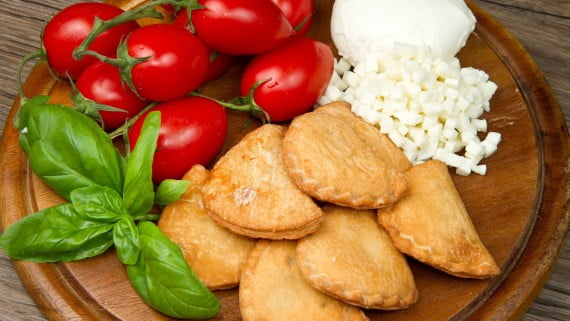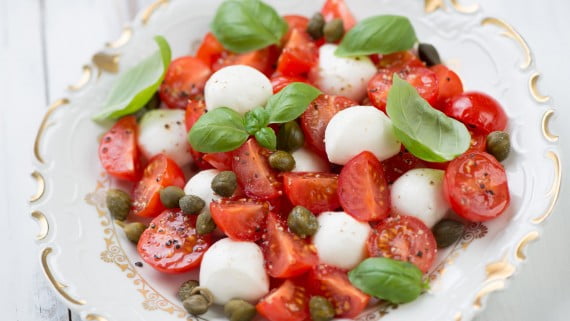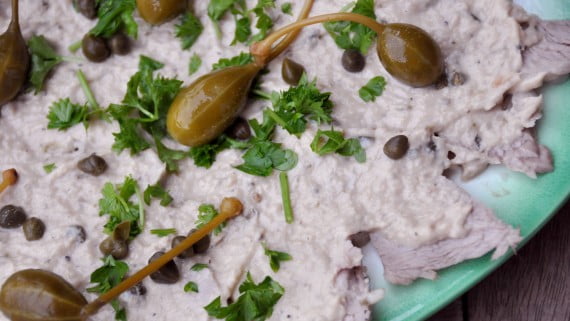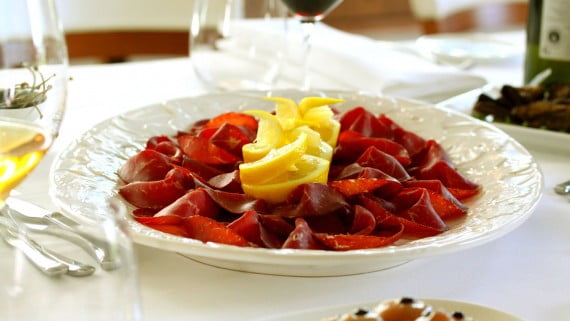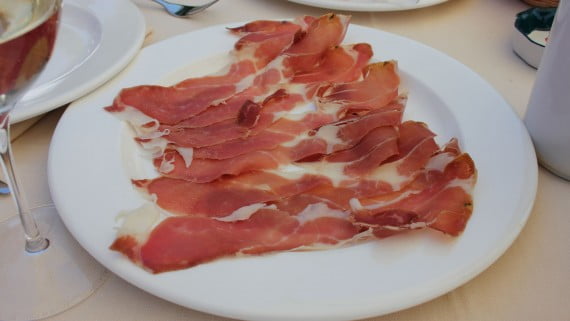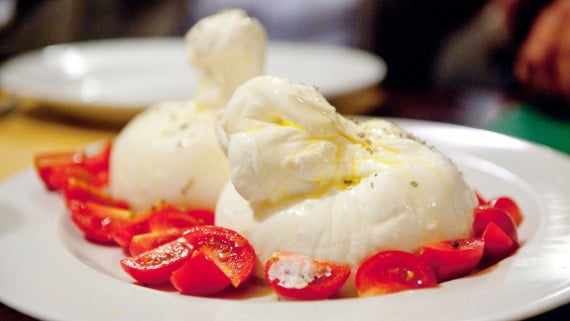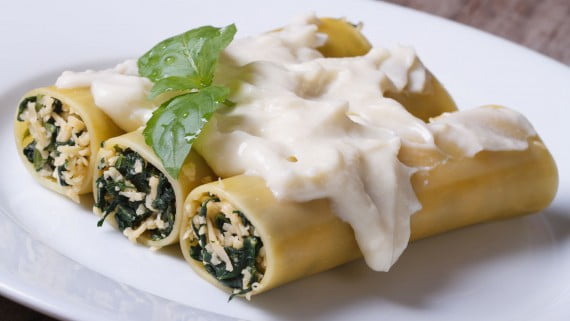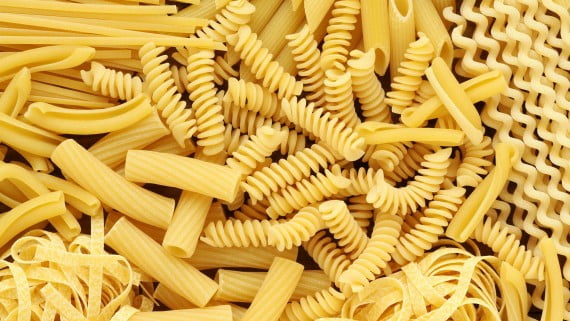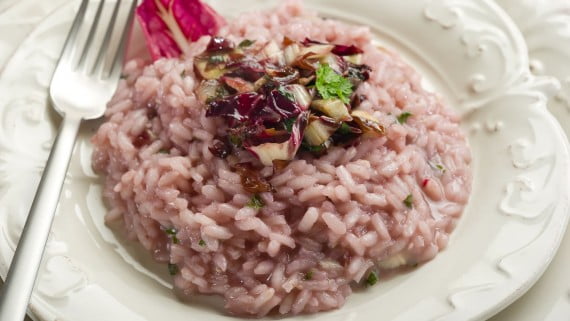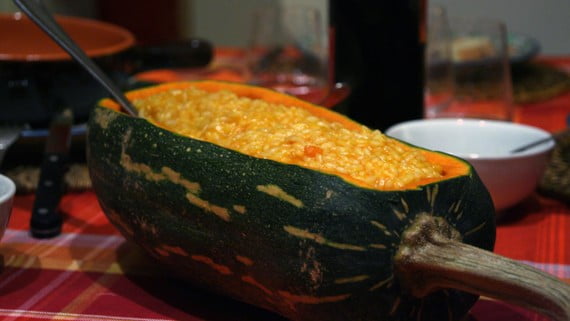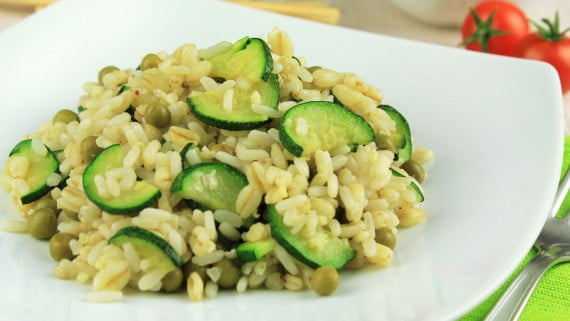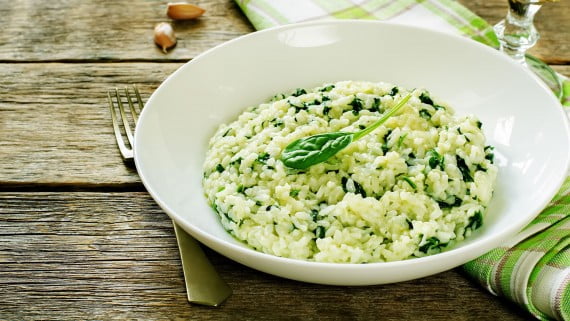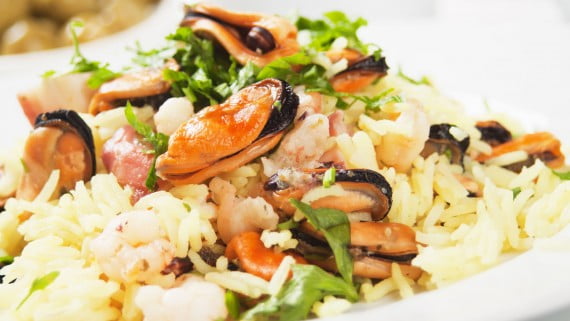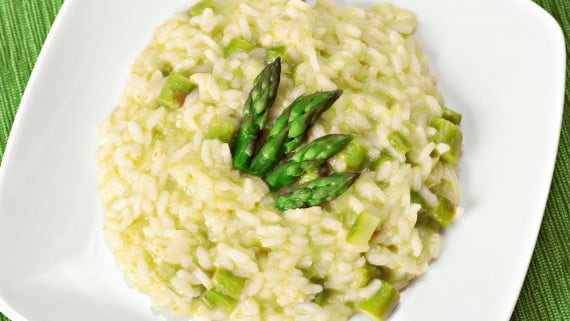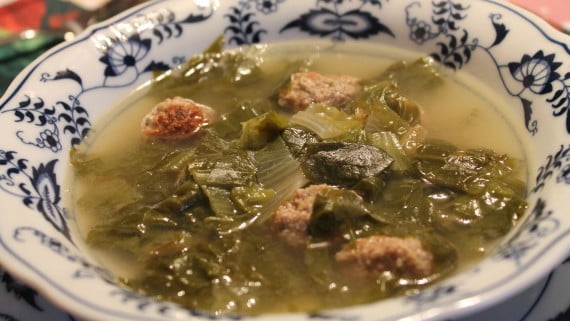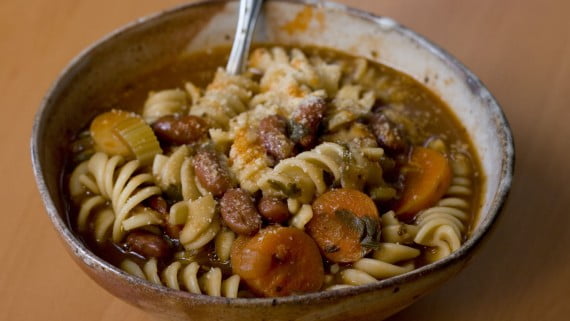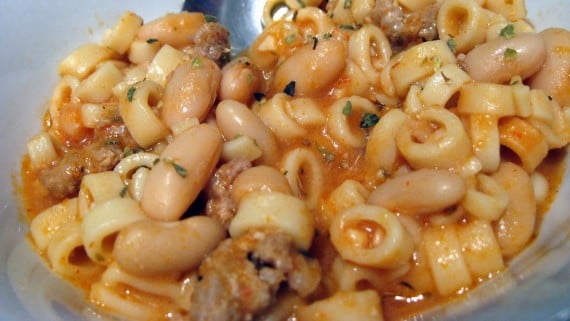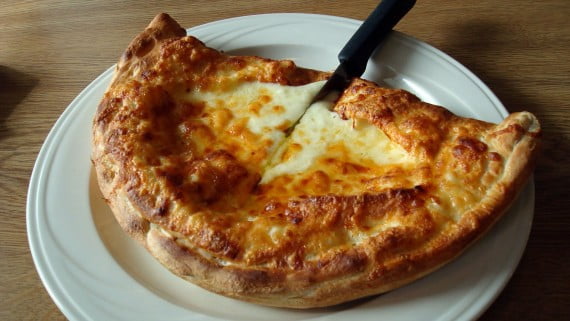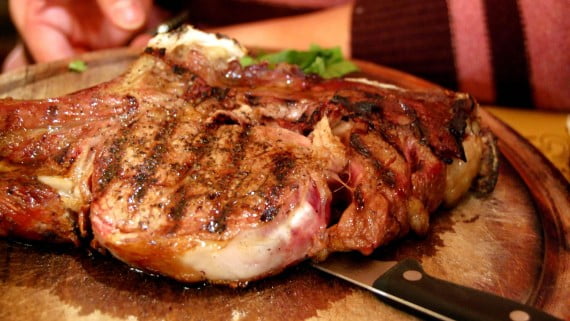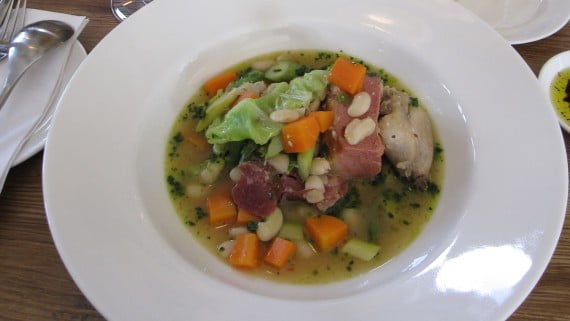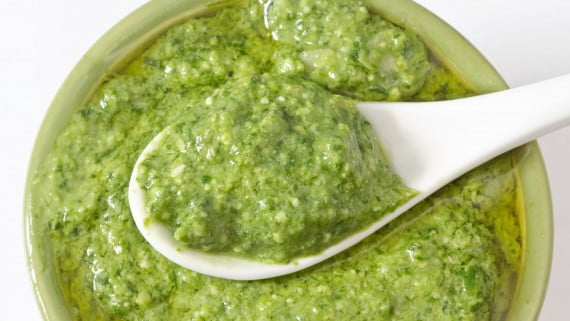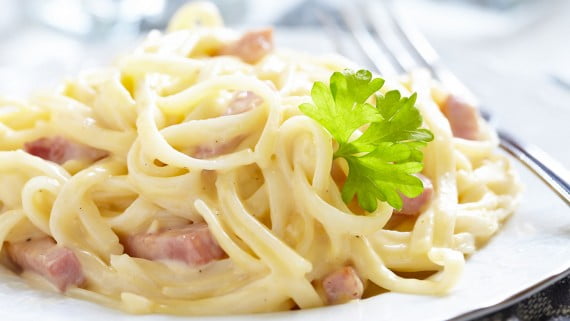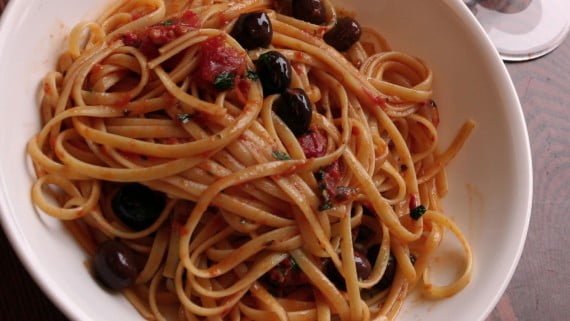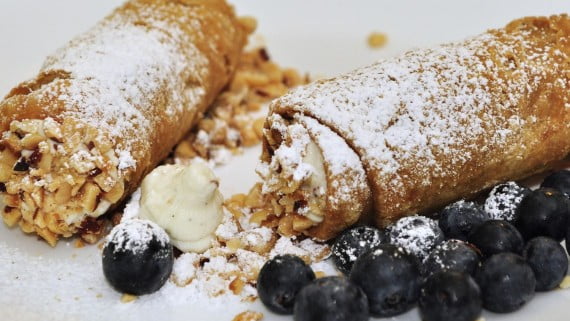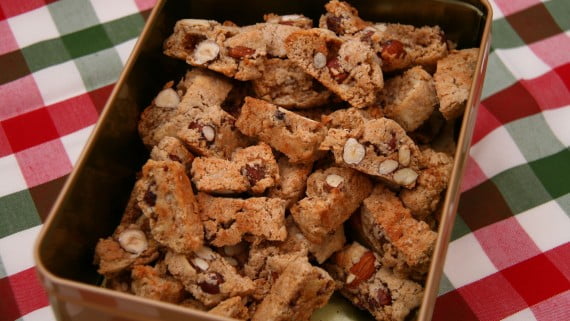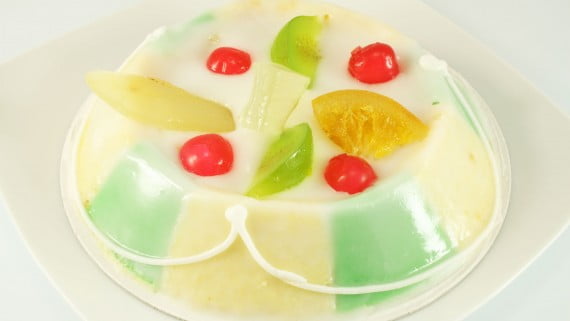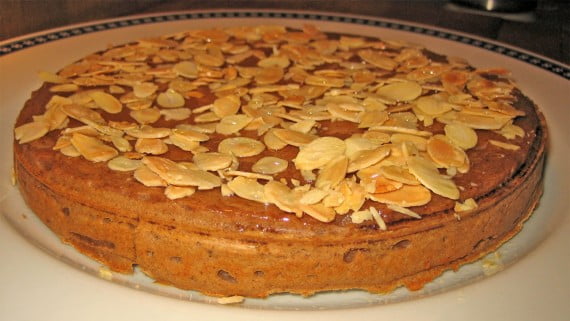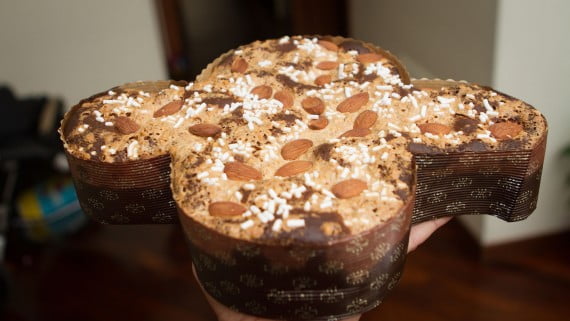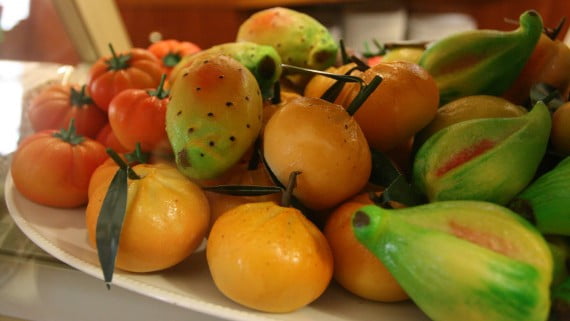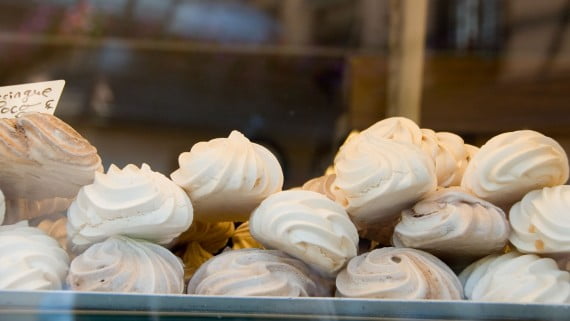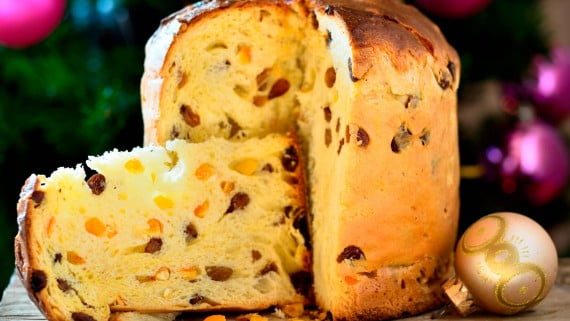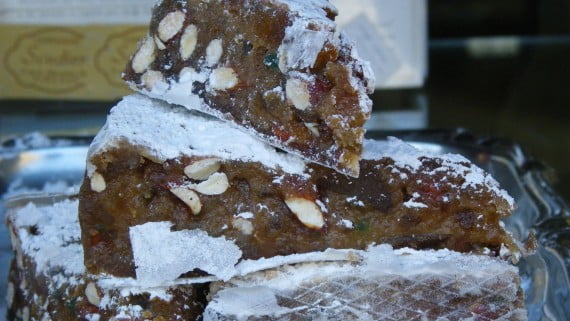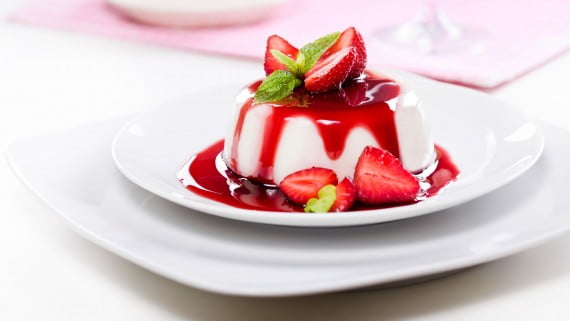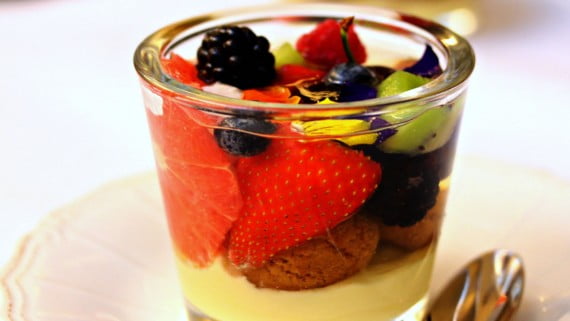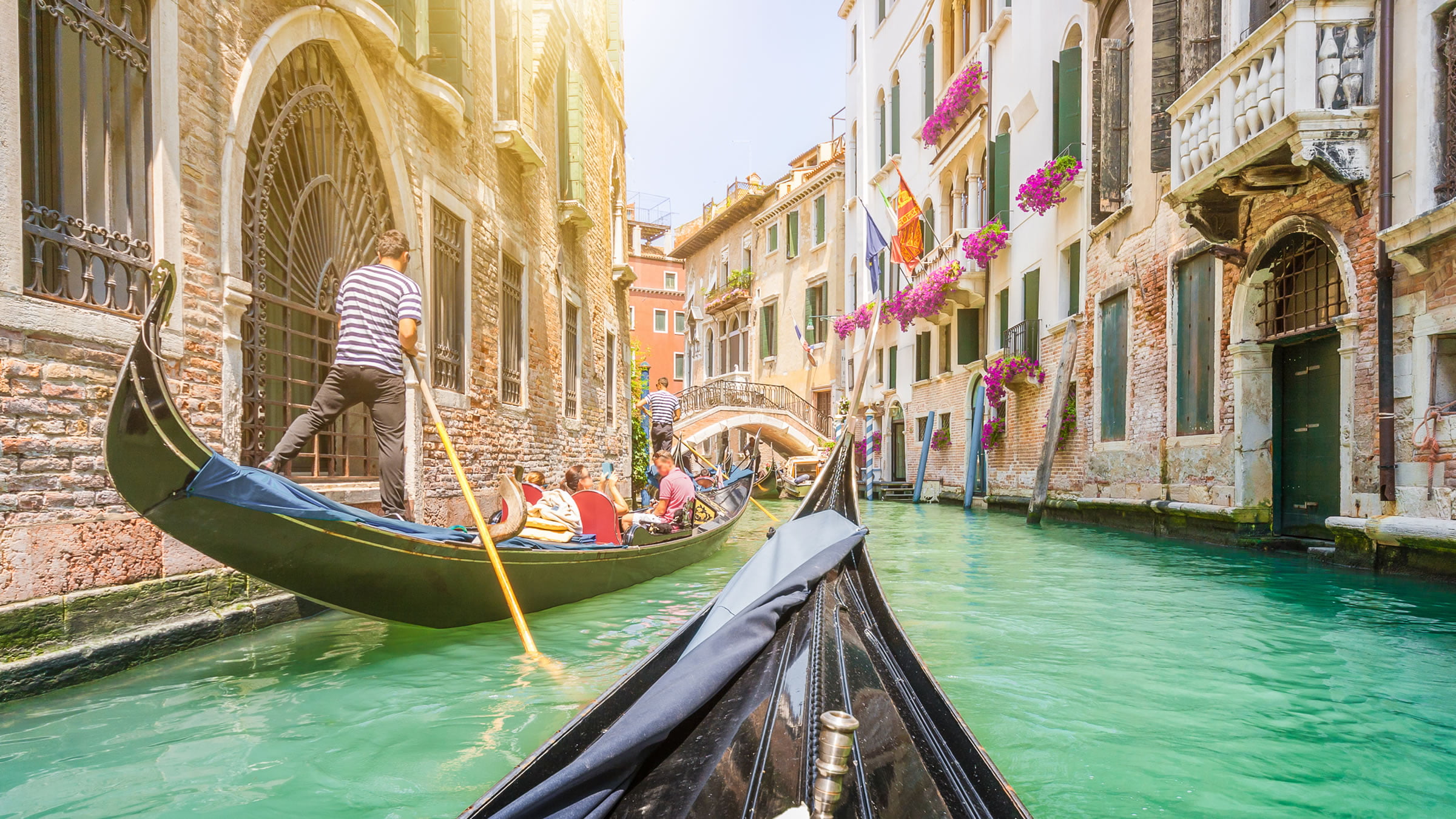Italian recipes are a reflection of Italy's regional diversity and gastronomic culture, as well as its long history. The ingredients used are included in the popular Mediterranean diet, which makes Italian dishes imitated around the world, mainly for their unique flavors.
Below you have an index with all the points that we are going to deal with in this article.
Article Index
- 1.
- 1.1.
- 1.2.
- 1.3.
- 1.4.
- 1.5.
- 1.6.
- 1.7.
- 1.8.
- 1.9.
- 1.10.
- 1.11.
- 2.
- 2.1.
- 2.2.
- 2.3.
- 2.4.
- 2.5.
- 2.6.
- 3.
- 3.1.
- 3.2.
- 3.3.
- 3.4.
- 3.5.
- 3.6.
- 3.7.
- 3.8.
- 3.9.
- 4.
- 4.1.
- 4.2.
- 4.3.
- 5.
- 5.1.
- 5.2.
- 5.3.
- 6.
- 6.1.
- 6.2.
- 6.3.
- 6.4.
- 7.
- 7.1.
- 7.2.
- 7.3.
- 7.4.
- 7.5.
- 8.
- 8.1.
- 8.2.
- 8.3.
- 8.4.
- 8.5.
- 8.6.
- 8.7.
- 8.8.
- 8.9.
- 8.10.
- 8.11.
- 8.12.
- 8.13.
- 8.14.
- 8.15.
- 8.16.
- 8.17.
- 8.18.
Antipasto
The term appetizer, whose plural is antipasti, literally means before the main dish (doors means previous y grass equivalent to food).
Therefore, as its name indicates, the antipasti are what in Spain is known as incoming, that is, the dishes that come before the first and second courses. This type of food is usually served cold, although there are also hot ones.
This custom is explained through the history of Italian food: it dates back to the Italian Renaissance period (XNUMXth century) and its aim was (and still is) to whet diners at large banquets with dishes that could be both salty and sweet. Here we show you the main antipasti.
Turnovers
This aperitif, which is also known under the name of panzerotto, is originally from the Puglia region, located in southern Italy. It is a dough made of wheat flour mixed with brewer's yeast and pork fat.
It is similar to the dumplings so popular among spanish tapas, since this dough is filled with natural tomato sauce and mozzarella cheese. The dough is sealed and then fried with pork fat. The final texture is crunchy.
Caprese salad
It is one of the typical Italian salads and is also known simply under the name capreseAs it comes from the Capri region, it contains the following basic ingredients: tomato slices and fresh mozzarella balls. It is always accompanied by fresh basil leaves, specifically the large-leaf variety, and olive oil.
There are also variants that add ground black pepper and black olives or even grated cheese in addition to the mozzarella balls. This dish stands out especially because the colors of its ingredients are reminiscent of the colors of the Italian flag: red, white and green.
Carpaccio
Carpaccio is a very versatile starter in the sense that it can be made with different ingredients, be it meat or fish. It is another typical Italian food famous internationally.
The basic rule to make a carpaccio dish is to cut the meat or fish into thin slices and accompany it with other ingredients such as cheese, onion slices, basil leaves and olive oil. When meat is used, the most used is veal; On the other hand, when we talk about fish, salmon is very recurrent.
Arancini
In singular ariancino, this aperitif is original from the region of Sicily, specifically from the city of Messina, where they are known by the name of orange o arancina.
They are a kind of spherical-shaped croquettes made of rice pasta and Parmesan or Pecorino cheese and eggs. They are fried in very hot olive oil, although they can also be baked. The filling can contain various ingredients, namely: tomato sauce, peas, cooked ham, mozzarella ...
Its color is slightly orange because saffron is used for its preparation. There is a variant in Catania called arancini alla norma o there catanese, whose main ingredient is aubergine. In Bronte, they come across pistachios.
Veal with tuna sauce
This dish is original from the region of Piedmont, where it is given the name of vitel tonné in Piedmontese. It is also popular in those areas of Argentina, Uruguay and other countries where Italian communities coexist.
It consists of beef tenderloins that are served with a sauce made from hard-boiled egg yolks, tuna and cream, as well as anchovies. Capers are also often added, but this ingredient is optional. It is usually eaten cold and as a starter or appetizer.
bresaola
This appetizer or incoming consists of slices of beef cured (two or three months), which is known as dried meat o dehydrated meat. Once cured, the veal turns purple.
This dish is original from the Lombardy region, specifically the Valtellina Valley, located in northern Italy. It is seasoned with olive oil and lemon juice.
Prosciutto
The term Ham literally means ham And this dish is nothing other than the classic slices of ham that are also traditionally served in Spain as tapas or appetizers. It is characterized because it is cut into very thin slices, almost transparent.
It is served without cooking, so that in Italy it is known as ham; on the other hand, when it is served cooked it receives the name of baked ham. The most valuable pieces of prosciutto and considered a gastronomic luxury are those from northern and central Italy, especially from Parma, San Daniele and Friuli-Venezia Giulia.
Salami
This sausage, which is currently very popular in other countries such as Spain, is actually originally from Italy and also from Hungary. It is a type of sausage that results from the mixture of various seasoned beef and pork and, later, smoked. It is similar to salchichón, except that in Italy it is seasoned with garlic.
In Italian, the word salami, whose plural is salami, literally means salty sausage, because its flavor is, indeed, salty, because salt is used for its preparation.
Bruschetta
Bruschetta is another very popular and traditional antipasto from central Italy. Its preparation is very simple, since it consists of several slices of toasted bread in which garlic is rubbed and, later, they are roasted in a special oven called brustoline so that they are golden.
Once this is done, olive oil, ground paprika and salt are added, although these ingredients may vary according to the region or area where they are prepared, since it is an aperitif open to the imagination of each one.
Cheese, tomato and other vegetables cut into small cubes are also added, such as peppers, carrots, sweet corn, onion ... In the Tuscany region, this dish is called fettunta, whose literal meaning is slice in oil.
Eggplants parmigiana
The antipasto of eggplant parmesan or Eggplant Parmesan It is a dish from the region of Campania, south of Italy.
As its name indicates, the main ingredient in this dish is aubergines (aubergine in Italian) cut into slices about 0,5cm thick, which are fried and accompanied by grated Parmesan cheese (in Italian, Parmigiano-Reggiano), egg, tomato sauce and some basil leaves.
They are cooked on the grill, although if you want to obtain a less caloric dish you can also cook them in the oven. The arrangement of eggplant slices It is similar to lasagna in that they are layered, just like pasta sheets.
There are different variants of this dish; Thus, for example, the Neapolitan variant replaces Parmesan cheese with mozzarella cheese; on the other hand, in Sicily and Apulia cured sheep cheese (cheese pecorino cheese).
Another variant is the one made with squash, a dish known by the name of Stuffed zucchini and it is also very popular in the Argentine cuisine.
Burrata cheese
Burrata cheese or simply burrata is a very typical fresh cheese cream in Italy, whose name is derived from the term salted butter, Which is butter in Italian language, and this cheese is very buttery.
It is made with Cow milk fresh and obtained in the following way: first the curd is separated from the whey; then, the whey is heated and, once the curd has come into contact with the whey, it is spun, that is, the cheese becomes elastic in texture.
This process is also used to make fresh mozzarella cheese, but the difference between the two types of cheese is that mozzarella is made from buffalo milk. The burrata looks like a sack, because it is filled with a mixture called chocolate chip, which is obtained by mixing the spun pasta with milk cream.
The texture of this cheese is creamy and it is usually served with tomato slices and toasted bread.
Pasta
Pasta is the mainstay of Italian cuisine and there is a wide range of types of pasta, each with a different shape. Usually, pasta is always served with a sauce and is always seasoned with spices such as oregano or basil.
Meals with Italian pasta are included as a first course within the typical structure of an Italian food menu, that is, as the first (Italian main dishes), after l'antipasto. Among the main names of Italian pasta we highlight those mentioned below.
Lasagna
La Lasagna It is a variety of pasta in the shape of a square sheet. This plate consists of several of these sheets interspersed to form a block. Between each sheet a filling is added that can be meat, fish or vegetables and that is mixed with a typical sauce, usually Bolognese.
The ingredient that is never lacking in a good lasagna is bechamel. It is traditional to cook it in the oven, which is why in Italy it is often called baked lasagna. The term Lasagna comes from latin lasanum and, in fact, it refers to the container that was used in the past to cook it.
Canelones
To make cannelloni (cannelloni in Italian) the same sheets are used as for making lasagna, the difference is that instead of interlaying the sheets in layers, they are rolled.
The end result is a kind of roll of cylindrical shape, hence they are called cannelloni. This dish is currently consumed more in Catalonia (Spain) than in Italy itself.
Ravioli
ravioli is a word derived from latin turnip and means kind of delight. In this way, any type of filled pasta is a variety of ravioli (ravioli in plural).
Thus, the famous tortellini, agnolotti, anolin, casencelli, Cappelletti, pansotti, Sorrento and a long etcetera are types of ravioli.
The ingredients that are usually filled are varied and open to the imagination of those who prepare them, but cheeses, meats, vegetables or even fish, such as tuna or salmon, are common.
Tagliatelle
Tagliatelle means in Italian noodles and it is a type of elongated pasta with a flattened shape from which different varieties are derived, each with a different width. Noodles in Italy are part of a group of pasta called paste asciute, that is, dry pasta.
To prepare them, they must be boiled in water, usually for about 10 minutes. Afterwards, they are drained and olive oil and some typical Italian sauce (bolognese, carbonara, pesto ...) and spices such as oregano or basil are added.
They are actually similar to the noodles in the Chinese gastronomy, but they differ in that the flour used for Chinese noodles is rice or soy, and that used for noodles from Italy is wheat.
Spaghetti
Spaghetti is the plural of the term spaghetti and has been adapted to Spanish as spaghetti. The meaning of spaghetti es cord and it is derived from the shape of this type of pasta: elongated and thin, like a "rope", with a circular section, unlike noodles, whose shape is flattened.
Like tagliatelle, they are also common in Chinese cuisine; for example, rice noodles are similar. Like the other types of pasta, they are cooked and then served with a sauce.
Macarons
In Italian macaroni, Macaroni are a kind of hollow tubes inside and elongated in shape. The etymology of the word macaroon brings us to the Greek term makários, whose meaning is feliz.
Its origin dates back to the time of the Mezzogiorno in Italy and they were introduced in the country due to the migratory movements so frequent in Italy during that time. The spread of macaroni around the world has expanded so much that they are currently part of the weekly diet of almost all Spanish families, for example.
Rice
In Italian, rice It is said that rice and hence the term derives Risotto which, contrary to popular belief, refers to all the typical Italian dishes whose base ingredient is rice within the Italian gastronomy.
Risotto is especially popular in Piedmont, Verona and western Lombardy, since rice cultivation is common in these regions. This dish always consists of rice, Parmesan and some other ingredient, which can be a vegetable or some type of meat or fish. Thus, below we list the most common types of risotto:
Saffron risotto
This type of rice is native to Milan and the ingredient used is saffron, so the plate has a yellowish color.
Risotto with radicchio
The risotto al radicchio is prepared with red cabbage salad, whose main ingredient is red cabbage. Hence, the color of this type of risotto is reddish.
Mushroom risotto
The ai funghi risotto is probably the most popular type of risotto and the one that has crossed borders. Many people think of him mushroom risotto when he talks about risotto. This variant carries mushrooms.
Pumpkin risotto
This type of risotto has pieces of pumpkin, which makes its flavor a mixture of contrasts, since the salty flavor of the rice mixes with the slightly sweet flavor of the pumpkin. It is traditional to serve it inside the pumpkin itself, which in turn enhances the flavor.
Risotto with zucchini
El zucchini risotto is similar to pumpkin risotto, except that it is prepared with zucchini. It is important to use fresh zucchini for its preparation; otherwise the end result may be somewhat bland. Given the amount of vitamins that zucchini has, this dish is highly healthy.
Risotto all salsiccia
El risotto alla salsicciaUnlike the risottos mentioned above, it is prepared with meat, usually with a type of characteristic Italian chorizo or with sausages.
Spinach rise
This risotto is made with spinach, hence its color is greenish. This risotto, like all the others, has Parmesan cheese. In addition, it is usual to add a chilli, so that it acquires a spicy touch. Onion is also added.
Sea frutti risotto
El risotto with seafood is made with shellfish. Among the seafood it usually includes, mussels, fresh clams or squid stand out, among others. To cook the rice, fish broth should be used, so that we will enhance the seafood flavor.
Risotto alla asparagi
For the preparation of this variant of risotto, green asparagus. Goat cheese can also be used instead of Parmesan cheese.
Soups
The use of various vegetables is very common in most Italian soups, as we will see below. Pasta can also be eaten accompanied by a broth and accompanied by meat such as chicken, among others.
Maritata soup
This dish consists of a soup that is also known by the name of italian wedding soup, since the name in Italian literally means marriage soupAlthough this does not mean that it is related to weddings.
The use of the concept of marriage comes from the fact that the main ingredients of this dish, the meat and the vegetables, are first cooked separately and, to be served, they are put together, that is, they are "married".
The broth in this soup can be made from beef or chicken meat and, as for vegetables, among these always parsley appears. Also included are chard, spinach, kale, cabbage ...
Minestrone
This is the most famous Italian soup internationally. It is prepared based on tomatoes and a wide variety of vegetables, as well as legumes and macaroni. The recipe for this soup varies according to regions; In this way, the coastal towns prepare it with shellfish and fish; instead, the inland regions add meats and sausages.
Fagioli pasta
The soup named fagioli pasta it is usually served as appetizer or starter in most Italian food restaurants. Contains beans (fajioli in Italian), which must be of high quality. This soup is suitable for vegetarians, although it is true that there are versions in which ham or bacon is included.
Pizzas
Pizza, with all its varieties and accessories, is undoubtedly the most popular dish not only in Italy, but in much of the world, and the variety of textures and contents that it can include in its preparation make it an ideal dish for be adapted to other cultures, mainly due to its ability to fuse different ingredients.
The most traditional pizza is the one based on a baked flatbread, which is made with wheat flour, water, salt and yeast, which is covered with tomato sauce and mozzarella cheese. From there, the rest of the ingredients go to taste and are open to the imagination of each diner.
Thus, there are a multitude of pizza recipes, whether they are for meat, vegetables, different cheeses, fish ... The range of possibilities is very wide; However, here we give you the names of the traditional Italian pizzas:
- Marinara pizza: its ingredients are tomato slices and oregano.
- Margarita pizza- This pizza also includes tomato slices as well as mozzarella cheese balls.
- Neapolitan pizza: It includes the same ingredients as the margarita pizza, but also oregano and basilic are added.
- Spring pizza: its characteristic ingredients are olives and artichokes.
- Four Seasons Pizza: the quattro stagioni pizza It includes characteristic ingredients of each time of the year. Thus, in the spring it includes olives and artichokes; representing the vernao, salami and pepper are included; autumn is reflected through tomato and mozzarella; winter finally shows itself through mushrooms and boiled eggs.
- four cheese pizza: As its name suggests, this pizza includes four different types of cheese, which are usually mozzarella cheese, blue cheese, provolone cheese and Parmesan cheese.
Focaccia bread
Focaccia is very similar to pizza, but it differs in the type of bread used. This consists of a dough that is made from flour, oil, salt, water and yeast and also has a high gluten content.
This base is covered with various herbs and spices, such as rosemary, which gives it a very characteristic flavor. The traditional specialty of focaccia comes from the region of Genoa, specifically from Recco.
Calzone
Calzone is a type of original pizza from Nápoles And, therefore, it is similar to Neapolitan pizza in terms of the ingredients it includes. It is also cooked in the oven, but it differs from pizza in that it is a closed dough filled with cheese (mozzarella, ricotta, parmesan ...), minced or ground meat, vegetables ...
As the dough is closed, the aroma of its ingredients is enhanced during the cooking process. It is served hot and is usually accompanied by marinara sauce, which consists of tomato sauce dressed with basil. This dish is also commonly consumed in Argentina.
Panini
The panino (panini plural) is a variant of pizza that constitutes a mixture between pizza and sandwich. The panini are made in a similar way to pizza, that is, on a loaf of bread, the ingredients are added, including the tomato and the cheese on the base, and they are baked.
The bread used is usually the rustic bread medium-sized, specifically in Italy, either a slipper (white bread made with very young wheat flour) or a rosette. Panini are always eaten hot and toasted, which makes them usually receive the colloquial name of toast (English language term that means toast).
Typical italian meat
The best Italian meals are listed in this section and are those that are considered main dishes of the day or main dishes in Italy, like pizza, pasta, soups and those mentioned above.
Braised veal
It is a traditional Milan dish that has been gaining fame from the XNUMXth century until now. Osso Buco literally means hollow bone and it is a stew or stew made with beef shank cut into thick slices and boneless.
The most normal thing is that it is served accompanied with saffron risotto. To make the stew, white wine is used and, a few minutes before it finishes cooking, tomato sauce and some vegetables such as carrots, onion are added ...
Florentine steak
This meat dish is originally from Tuscany. Chianina beef or beef tenderloin is used. The fillet is characterized by being very thick and being boneless.
It is tradition to grill it with charcoal embers, so that the internal part is raw. Once cooked, olive oil, ground black pepper, Chianti wine and other spices are added to taste. It is served with Tuscan beans or lemon wedges.
Mixed bun alla piemontese
El mixed bun It is a typical dish of northern Italy, specifically Piedmont, similar to Pot Au Feu for the French gastronomy. This dish is considered a classic in Italian cuisine and is eaten at celebrations and special events.
It consists of boiled mixed meats that are cooked in the form of a stew or stew and are served with some vegetables, such as carrots, celery, onions, garlic ... As for meat, pieces of different parts of each animal are usually taken.
piccata
The term piccata It is actually a generic term and very frequent when we talk about Italian cuisine, since it consists of a kind of mincemeat or sauté that always includes a sauce made from lemon juice, butter and different spices.
This mince is applied to meat and fish, although chicken piccata is especially common. In addition, the dish is always accompanied by rice or pasta, as well as tofu in vegetarian variants.
Sauces
It would be difficult to imagine a plate of Italian pasta without it being accompanied by a sauce and the gastronomy of Italy is characterized precisely by the sauces that its dishes include, which give them a strong and unique flavor.
Some are lighter and others are more consistent, but each has a very characteristic flavor. Here we show you the main Italian sauces.
Pomodoro sauce
Pomodoro sauce is a very simple sauce to prepare, since it basically consists of Crushed tomato along with other ingredients such as: onions, basil, salt, oil, various spices and garlic.
You can also include other vegetables such as peppers and during its preparation a touch of sugar is added to eliminate the strong acid flavor of the tomato. This sauce is, in turn, the origin of the Bolognese sauce that we talk about below and it is also the one that is spread as a base on all pizzas.
Pesto sauce
Although it is not the only ingredient that makes this sauce so special, it is true that the basil makes up the unmistakable flavor of this sauce.
The term pesto comes from the verb I'll blink, whose meaning is smash o Crush and comes from the fact that this sauce is made with a mortar, since all its ingredients are crushed.
In addition to basil, other ingredients that cannot be missed are: pine nuts, grated Parmesan cheese, olive oil, garlic and salt.
Carbonara sauce
Combined carbonara sauce is used to eat pasta and is characterized by the strong flavor provided by one of its star ingredients: bacon cut into small dice.
In addition, it is used born for cooking, Parmesan cheese, onion and in some cases mushrooms. The cream together with the cheese gives this sauce a thick texture. Finally, a touch of ground black pepper is added, as well as oregano or basil to taste.
Bolognese sauce
Bolognese sauce is one of the heaviest sauces in Italian cuisine, mainly because it includes mince. In addition, you can not miss the crushed tomato (pomodoro sauce) and onion, as well as different spices, including oregano.
Although this sauce has been around the world and has been marketed by several brands, it is originally from Bologna, hence its name.
Puttanesca sauce
Puttanesca sauce is the result of combining anchovies with capers, parsley, garlic and black olives. In addition, it is given a spicy touch thanks to the use of chilli, although this is optional and can be substituted for bell pepper.
It is prepared by putting olive oil in a pan and, immediately afterwards, the garlic, onion, anchovies and olives are sautéed, as well as the tomato sauce and the rest of the ingredients. It is kept in the pan until it acquires a thick and homogeneous texture. Like Bolognese sauce, this sauce is considered heavy and quite calorific.
Desserts and sweets
Traditional Italian desserts and sweets have a long history. It is estimated that the former were based on bread with honey or fruits, since sugar was originally a luxury good. Today, typical Italian desserts vary by region, although all of them have become world famous to a greater or lesser extent.
Amaretti biscuits
The term Amaretti biscuits (in singular amaretto, Meaning bitter in Italian) designates a type of biscuit that can be found in any region of Italy.
They are made with alemond paste, which includes the following ingredients: sugar, sweet and bitter almonds, egg whites, and apricot kernels. Optionally, it is possible to also use spices, honey, milk, yeast and some preservatives.
This sweet is also popular in the French cuisine, especially in Lorena and in the Atlantic Pyrenees, as well as in Argentina. However, this dessert is of Arab origin.
Baba
El Baba al rum is a typical sweet from Naples, although it is also very popular in France. It is a kind of brioche made with dough enriched with egg and butter.
Once baked, this dough is drunk with rum syrup or another liquor, such as limoncello. Today, its shape is similar to that of a champagne bottle stopper, but the traditional recipe was prepared with a mold that was shaped like a crown.
canestrelli
They are another type of cookies that, although they are especially popular in Piedmont and Liguria, can really be found in any area of Italy.
It is estimated that the origin of this sweet dates back to the Middle Ages, when they were called nebule and they were served at special events, such as weddings, baptisms, carnivals or religious celebrations.
Eggs, flour, sugar, butter, cornstarch, vanilla and lemon zest are needed to make it. They are served covered in icing sugar.
Cannoli
The cannoli (cannon singular) are another of the star desserts of Italian pastries, although they originally come from Sicily, a region where they are served on special occasions.
They are cylindrical-shaped rolls that are made with flour, baking powder, salt, granulated sugar, egg yolks, and red wine. These ingredients are mixed until a compact dough is obtained from which we will obtain small circular doughs that we will later fry until their color turns brown-golden.
Once the cover is made, it is filled with pastry cream seasoned with a touch of cinnamon, ricotta cheese and ground walnuts.
cantuccini
This sweet is also known as nooks o Prato biscuits and it is original from Tuscany, specifically from Prato, hence the latter name. It consists of an almond cake whose production process is characteristic.
First, the whole cake is baked and, when it is almost done, it is removed from the oven, cut into slices and put back in until it is done. Your name in Italian bis-cotto means cooked twice due to this cooking technique. The first cantucci recipe dates from the XNUMXth century.
Cartellate
They are typical Christmas sweets, originating in the province of Foggia, although they are also very popular in Apulia and Basilicata. Its name comes from the term oleata letter, which is a type of kitchen paper used in ancient times and is characterized by being very fine, like the dough of these sweets, which is made with flour, white wine and oil.
The dough is shaped like a rose and, finally, they are fried in abundant oil and served impregnated with hot vincotto, chocolate fondue or honey and sprinkled with cinnamon, icing sugar or colored decorations.
Cassata
The cassata is an original dessert from Sicily whose name has been adapted in Spanish as caseta. Its ingredients are: ricotta cheese, granulated sugar and icing sugar, candied typical Italian fruits, sponge cake and marzipan.
The original recipe is simple, but currently there are several regional variants that can include everything from pistachios and pine nuts to chocolate, cinnamon or orange blossom aroma.
chestnut cake
This chestnut flour cake is traditional from Tuscany, Piedmont, Emilia and Liguria and locally also receives names such as Baldino, slob o ghrigio. It is usually taken in the fall.
In addition to chestnut flour, the dough is made with other ingredients: water, olive oil, pine nuts, sultana, etc. There are also local variants in which rosemary, orange peels, dried fruits, ricotta cheese, honey have been included ...
Easter cake
La Easter cake o Easter dove It is, as its name suggests, a common Easter sweet. The origin of this sweet dates back to the time of the Alboino King of Lombardy, who was granted a kind of sweet bread shaped like a dove during the siege of Pavia as a symbol of peace.
The original recipe for its dough is prepared with flour, sugar, butter, eggs, candied orange zest and almond glaze.
Crostata
It is a cake that consists of a dough whose doubles are folded in such a way that it is covered and filled with jam, which can be cherry, strawberry, peach or apricot, among other flavors.
It is also possible to fill it with pieces of fresh fruit and / or pastry cream, in which case the name given is that of fruit cake. Another variant is called ricotta tart, in which the jam is mixed with ricotta cheese and pieces of cocoa or anisetta. It is also a very popular dessert in Argentina.
martorana fruit
This sweet is very similar to marzipan and, in fact, it is also called Sicilian marzipan. Its origin is actually Arabic and the main ingredients are sugar and almonds.
In its origins they go back to the old Martorana convent in Palermo, where the nuns substituted fruit (oranges, lemons, tangerines ...) for marzipan with the shape and colors of each fruit to decorate the convent garden. For its preparation it is necessary to use dyes of various colors.
Italian gelato
El gelato It is the ice cream that is also widely consumed in Spain, especially during the hot summer months. The difference with the usual ice cream is that the production process of the Italian version is completely handmade and is produced in large quantities.
In addition, another important difference is the amount of air that each one contains; Thus, while normal ice cream contains 40% air, the gelato Italian never contains more than 10%. For this reason, gelato Italian is very creamy.
In turn, the gelato it contains more than 10% less fat than regular ice cream, due to the fact that it is prepared with natural ingredients. The usual flavors are those that come from Italy: tiramisu, limone, frutti di bosco, cappuccino, nocciola ...
Meringue
Meringue is a very common dessert also in Spanish pastries, where it can be found in different colors. It is made with beaten egg white and sugar, as well as vanilla, coconut or almond flavorings. Their flavor is very sweet and they are often used as a filling for cakes or pastries. The texture is soft to the touch, but they can also be hard when baked.
Panettone
The classic panettone is a typical Christmas cake that has crossed borders in recent years and has also become essential in the Spanish christmas. Its preparation process is not easy and requires up to two days to be ready.
The original recipe includes sourdough to make it, but it can also be made with baker's yeast. Before you start preparing the bun itself, the ingredients should be mixed and left to ferment overnight at room temperature.
For this ferment, little yeast should be used so that the dough rises very slowly, so that the intensity of the flavors will be much greater.
Panforte
The Italian panforte is similar to the German dessert called Nuremberg gingerbread. This dessert, like the panettone, is typical of Christmas, but today it can be taken at any time of the year.
Originally, his name was Panpepato (fruitcake with black pepper), because the original recipe included pepper. This sweet was born in the city of Siena. Among the ingredients that characterize it, stand out dried figs and candied fruits, as well as honey and powdered chocolate.
panna cotta
Although similar, the panna cotta it is not a jelly. This traditional dessert in Italy is prepared with milk cream, sugar and gelling agents, from which a mass similar to flan is obtained, but whose texture and flavor differ greatly.
Basically, the panna cotta it tastes like milk. To this kind of jelly, berry jam is added.
Sfogliatelle
These sweets are made of puff pastry with ricotta and semolina, and are originally from Naples, although, in reality, they are of Arab origin. It consists of many layers of this puff pastry that are rolled up and filled with almond paste.
The shape that is given to each of these sweets can only be achieved by making them by hand. Their texture is crunchy and they come in different sizes. The original name is sfogliatella riccia di Napoleon.
Tiramisu
Tiramisu is a cake that consists of several layers mounted one on top of the other. The ingredient that can never be missing in this dessert is coffee, which is added in each layer along with a cream made of beaten eggs and sugar, and a touch of Amaretto liqueur can be added in order to intensify the flavor.
Finally, cocoa powder is sprinkled. The base of the tiramisu can be made with cookies, sponge cake or Savoiardi biscuits (sponge cakes). Cheese is also used for its preparation, specifically mascarpone, since its flavor is sweet and reminiscent of whipped cream.
Zuppa inglese (Italian Trifle)
This dessert is very similar to tiramisu and its origin is actually English, specifically from the Elizabethan era. Within Italy, it is common in the regions of Ferrara, Bologna, Forlì ...
It is a cake that is soaked in the following liqueurs: alchermes y rosolio. In addition, pieces of berries and pastry cream, cream, fruit jelly or milk cream are added.
The traditional presentation is served in a glass so that the colors of its ingredients can be appreciated through it. Inside the glass, the layered sponge cake is superimposed with the pieces of fruit and the pastry cream.
This article has been shared 1065 times. We have spent many hours collecting this information. If you liked it, share it, please:

